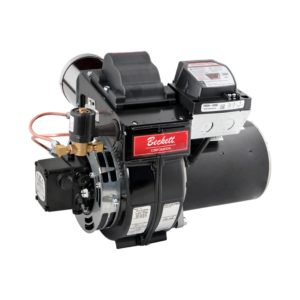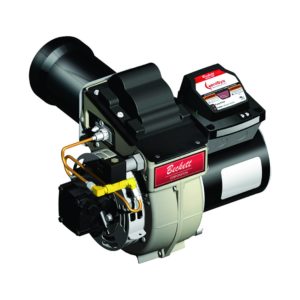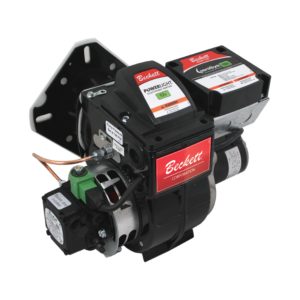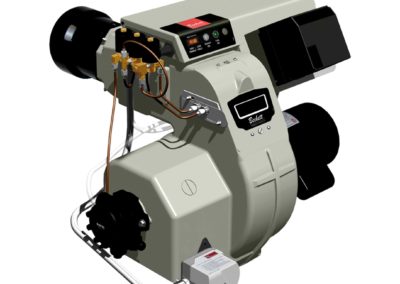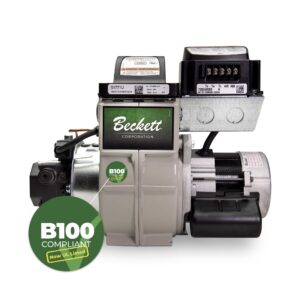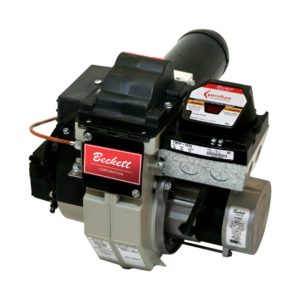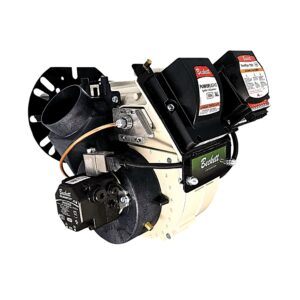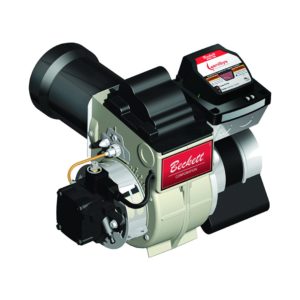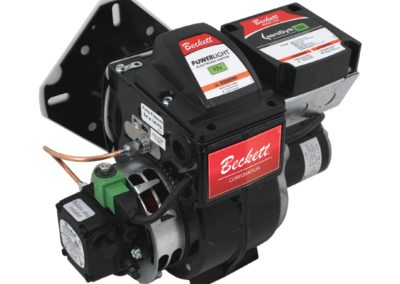Electrically operated solenoid valves have been used in our oil heat industry for many years. They serve a useful purpose and provide several benefits. Listed below are several important aspects to consider.
Benefits Provided by the Solenoid Valve
The quick-acting solenoid cutoff virtually eliminates smoke at shutdown. By immediately stopping oil flow to the nozzle, the burner air flow and static pressure are still adequate to complete combustion of any residual oil vapors in the combustion area, before the motor coasts to a stop. Tests have shown that this instant shutoff can eliminate smoke at shutdown and contribute to reduced heat exchanger fouling.
Also, the solenoid provides a secondary cutoff complementing the pump cutoff. This is helpful with gravity-fed oil supply systems or installations that have the storage tank located above the burner. If the pump cutoff ever fails, then the solenoid provides an auxiliary back-up until the next service call.
The solenoid valve provides an instantaneous, electrically controlled cutoff. This is especially helpful if there are rumbles or pulsations at shutdown with certain applications. This is superior to the slightly slower hydraulic pump cutoff, which is dependent upon the motor coast-down rpm.
A solenoid valve can enable the burner to be used with pre-purge or post-purge control systems. It blocks the flow of oil to the nozzle until the purge period is complete. A delayed solenoid valve can perform a valve-on delay (pre-purge) function. However, it is temperature sensitive. Heat from the ambient temperature or rapid cycling reduces its delay, while cold causes an increased delay. Therefore, it is application specific.
Solenoid Valve Construction
 Figures 1A and 1B present cutaway views of the solenoid valve and the flow schematic. The typical solenoid valve used on residential burners is normally closed when the coil is de-energized. The unit could be designed for direct action (no opening delay when the coil is energized) or delayed opening with a thermistor in series with one lead. These are classified as either non-delayed or delayed solenoid valves.
Figures 1A and 1B present cutaway views of the solenoid valve and the flow schematic. The typical solenoid valve used on residential burners is normally closed when the coil is de-energized. The unit could be designed for direct action (no opening delay when the coil is energized) or delayed opening with a thermistor in series with one lead. These are classified as either non-delayed or delayed solenoid valves.
Solenoid Valve Operation
Let us trace the operation of a solenoid valve from a call for burner operation to the completion of a cycle. In this scenario, we will discuss a typical system utilizing a standard intermittent duty oil burner primary control (R8184G or similar).
The thermostat calls for heat, causing the primary control relay to pull in, connecting line voltage to the orange lead. Typically, the motor, ignition, and solenoid valve are wired in parallel, so all are energized simultaneously.
NOTE: With delayed valves, the thermistor, which is a semiconductor whose resistance varies rapidly and predictably with temperature, creates a delay for several seconds. Once it heats up, it then permits the valve coil to be energized. Also, non-delayed solenoid valves could remain closed for the duration of a pre-purge period, if governed by a separate timer or special primary control sequence.
When the valve coil is energized, a magnetic field is developed, causing the spring-loaded steel valve piston to overcome the resistance of the spring and immediately pull into the stem. This moves the valve seat away from the cutoff orifice. The valve is now in the open position (Figure 1B).
The motor and the pump approach full speed. Quickly following the opening of the valve, the pump rpm reaches a level that generates enough pressure to move its regulator piston to the open position. Oil then flows to the valve inlet, through the orifice, and to the nozzle.
NOTE: By design, delayed valves or pre-purge timers enable the motor and pump to reach full operating speed for several seconds before the solenoid is energized.
The high pressure oil flows through the nozzle and is atomized, mixed with the blower air delivery, and ignited by the electrode spark. A flame is established and maintained until the temperature controller is satisfied and de-energizes the burner primary control.
The primary control de-energizes its relay, and line voltage is immediately cut off from the orange lead. The solenoid coil magnetic field instantly dissipates, and the spring-loaded valve piston snaps closed, stopping oil flow to the nozzle (Figure 1A). The flame is extinguished.
Quickly following this action, the motor speed decreases to a level where the pump regulator piston travels to its closed position. The motor and pump shaft rotation slow to a stop. The cycle is complete.
 The oil solenoid valve is quite versatile, and there are various configurations that can be mounted to the fuel pump or to the burner housing. Always check the pressure rating to make sure that the valve is compatible with the pump pressure you are using. When properly installed in applications where needed, the solenoid valve can indeed provide many benefits which can contribute to dependable, efficient oil heating.
The oil solenoid valve is quite versatile, and there are various configurations that can be mounted to the fuel pump or to the burner housing. Always check the pressure rating to make sure that the valve is compatible with the pump pressure you are using. When properly installed in applications where needed, the solenoid valve can indeed provide many benefits which can contribute to dependable, efficient oil heating.










